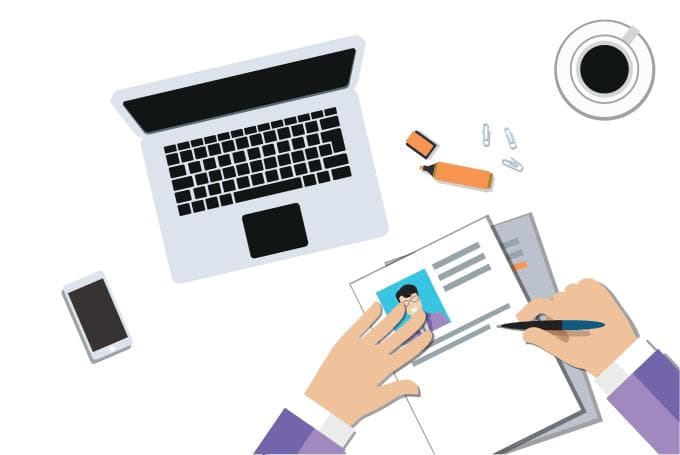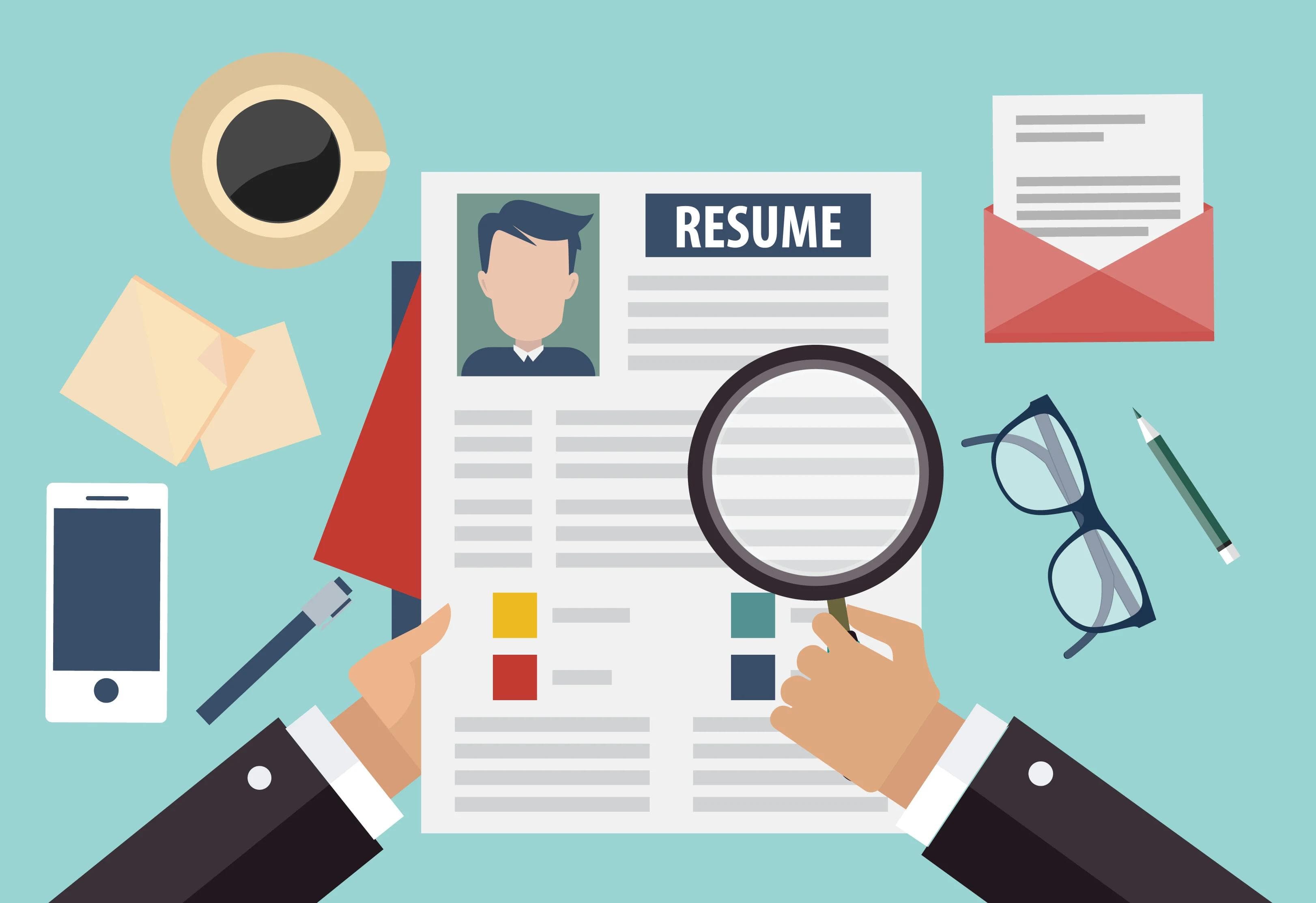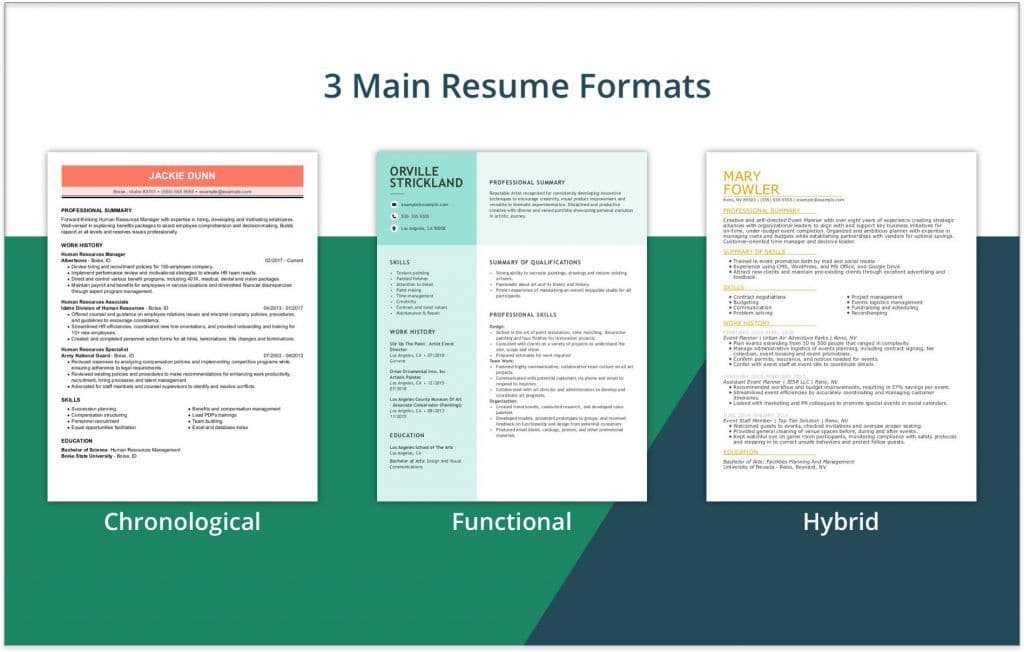Your resume is no longer just a piece of paper; it is also how you enter the arena of job competition. To get it right and professional, this blog post will help you to craft an effective resume. Such assistance comes in handy for fresh graduates, seasoned experts planning to switch careers and even accomplished professionals.This section will guide you through the theme and key element contents that should include your resume, as well as the mistakes that need to be avoided, as well as tips for formatting your resume. So, even within these difficult times, a job offer does not need to be far off your grasp.Learning about basic resume guidance can ensure that you create a high-quality document that accurately portrays your skills and experience. It is crucial to ensure that your document accurately mirrors the skills and acquired experience. So, are you eager to discover the secrets of a convincing resume and reach your desired job? Then, come and apply the following guidelines in this blog post and beat that job offer without breaking a sweat.Let's roll in!


 In general, to come up with a unique and outstanding resume, you have to do much more than just list down qualifications. It is a masterpiece skillset that is done with a lot of creativity, ensuring one knows what the applicating position requires. It is all about finding the most effective way to state qualifications, skills, accomplishments, experiences etc.. in a language that the recruiter feel impressed!This is because the resume is the user’s ticket to the dream-stage interview. It's your chance to make a great first impression and present yourself as the ideal candidate to the recruiters.By simply following these simple but essential guidelines in this article, you can not only avoid common resume mistakes but also write an ATS, well-organized, and job-specific resume. So, with these guidelines in hand, get ready; 2024 will be your year in a crowded job market. But if you are still wondering how to make one? No need to worry; we have your back! We understand that everyone comes from a different career background, so we are committed to helping you display your distinctive skills in the best way possible by trying out our Rapid Resume automated template. Our service is dedicated to helping you create an outstanding resume that will act as the key to your dream job within a couple of clicks. Sign up today and let us be your trustful partner to transform your resume into the most powerful one!
In general, to come up with a unique and outstanding resume, you have to do much more than just list down qualifications. It is a masterpiece skillset that is done with a lot of creativity, ensuring one knows what the applicating position requires. It is all about finding the most effective way to state qualifications, skills, accomplishments, experiences etc.. in a language that the recruiter feel impressed!This is because the resume is the user’s ticket to the dream-stage interview. It's your chance to make a great first impression and present yourself as the ideal candidate to the recruiters.By simply following these simple but essential guidelines in this article, you can not only avoid common resume mistakes but also write an ATS, well-organized, and job-specific resume. So, with these guidelines in hand, get ready; 2024 will be your year in a crowded job market. But if you are still wondering how to make one? No need to worry; we have your back! We understand that everyone comes from a different career background, so we are committed to helping you display your distinctive skills in the best way possible by trying out our Rapid Resume automated template. Our service is dedicated to helping you create an outstanding resume that will act as the key to your dream job within a couple of clicks. Sign up today and let us be your trustful partner to transform your resume into the most powerful one!

What Are Resume Guidelines?
Resume guidelines provide a list of instructions and suggestions guiding you in the writing of a professional, successful resume. This list can also be used as a more comprehensive book which tells you what to put in your resume and what might be better not mentioned at all. So, the benefit of any kind of template is that it can help arrange and organize your resume in a way that is appealing to prospective employers but also makes sense to them. It is also a listing of the activities or a guide that advises the reader on how to layout, font choice, and design the information of their resume.Why Are Resume Guidelines Important?
Resume guidelines are an essential aspect of your job application process, as they give you a set of basic rules which will guarantee you a high-quality resume that will be effective. The guidelines are very helpful and simple and will assist you in putting your skills, experiences, and qualifications into the paper. A resume is the first and foremost document that managers read to determine whether or not they fit their job requirements. Hence, it should ideally represent you and your experiences in a very accurate and comprehensive way, and resume guidelines will help you do exactly that and save you from frequent mistakes that may result in your failure.As well as the content, also how you design your resume is very important. The resume guidelines both work to ensure that what you send into the world of working is not only true but also professionally pretty good, organized and pleasing to look at. Both a well-structured and focused resume can greatly increase your odds of getting invited to participate in the subsequent selection process.Top Guidelines for Creating a Stellar Resume

Pick the Correct Resume Format for You
1. Chronological resume formats- A reversed-chronological order resume that starts with your most recent position
- It is not ideal if you have several employment gaps or want to move into another industry.
- It’s the most used of the 3 resume formats and suits people with lots of work experience and stable working history.
- The particular type of profile is based on transferable skills and achievements that are applicable to a specific role.
- This format is perfect when someone has to account for several employment breaks in their working history or decides to change careers.
- This format is a combination of the functional and chronological resume styles.
- It highlights both your professional experience and transferable skills.
- It is most suitable for seasoned professionals with lots of work experience and accomplishments.

List Out Your Information Into Specific Sections
For insights on how to write each section of your resume, the following information must always be included:Resume Header: Include your contact details in this section. It can be a phone number, residential city and state, and a professional email address. You can also provide links to your professional portfolio, LinkedIn profile, or a relevant social media account that you believe is used for professional purposes.Resume Summary: In this section, start off with an engaging statement that presents your most outstanding experiences and skills in just a few powerful sentences.Career Objective: If you have little professional experience, use a career objective rather than a summary. In this part, you should rather emphasize your main skills and career aspirations.Skills Section: Use bullet points to list your best skills and qualifications. Remember to include a balanced mix of hard and soft skills.Experience Section: Document your past and present employment, listing three to five bullet points under each job to describe your key achievements. Be as specific as possible about your accomplishments, and use quantifiable data to support your claims (note that it must be related to the job position you are applying for and use action words for impact)Education Section: This section should be brief and to the point, listing your highest academic achievements, as well as your main major and minor or GPA ( if it’s greater than 3.5). Include any significant certifications or qualifications you have received.Additional information:- A professional development section for courses, projects
- Certifications and Licenses
- Publications and Research Papers
- Awards and Honors
- Hobbies and Interests
- Volunteer Experience and Internships
- References or Relevant Coursework
The Ideal Length for a Resume
Though you may get a variety of answers and even heated arguments as to how long the resume ought to be, there is no easy answer that fits all circumstances uniformly.- A single-page resume should be more than adequate for anyone with less than five years of job experience as long as it emphasizes the right points. In particular, such resumes should include brief descriptions of your educational background, current internships or work experiences–and a few abilities/certifications, if you have them, which are relevant to the job you've applied for.
- A two-page resume is an appropriate option for seasoned professionals who have been in the workforce for a longer period of time. This format allows potential hires to obtain a high-level outline of their work history, professional successes and certifications, and skills in a broad overview. In this way, they might get some idea of what the candidate will be able to do for their business.
Formatting an ATS-friendly Resume
In the hiring process nowadays, it's very important to format your resume correctly with an "Applicant Tracking System". ATS is a software application that scans your resume, perceives your qualifications in comparison to that job position, and then, finally, ranks your application based on the job requirement. Thus, you can prepare your resume to work perfectly and get more job interviews with a mere investment. Many people fail to get a job interview because of their resume format. It should indeed be friendly for the system but personalized. This means using a professional font like Arial, Helvetica, or Times New Roman, mentioning the exact skills and keywords in the job posting, and including professional experience that directly relates to the new job's responsibilities. This strategy will allow you to capture all the requirements and indicators for each job application and present yourself exactly how the company wants to see an applicant. But take note that please never send the same resume to multiple job positions. Tailoring your resume to each job is a must if you want to kick out your career.Tips for Formatting and Structuring Your Resume
The format of your resume is as important as the contents. Configured properly and without too many columns, colours or graphics. For a better design of your resume, follow these tips to improve your chance of standing out among the other applications and to ensure the Applicant Tracking System (ATS) can easily scan your document:Choose a standard font printing that is easily readable, such as Times New Roman, Arial, Helvetica, Calibri, and Garamond font. The size of the font is also important and needs to be considered as well. The usual size must be 11-12 pt for your normal text and 14-16 pt for titles.
Maintain 1-inch margins from all sides to avoid overfilling.
Use bullet points when listing multiple pieces of information, such as your education, work history, etc. for readability.
Avoid special characters that an ATS might not read correctly.
Use simple, understandable language. Jargon or complex terms may confuse the ATS.
Ensure uniformity in your resume. For example, all bullet points should consistently either end with a full stop or not, depending on your choice.
Make sure to proofread your resume for mistakes before you send it off.
Bold and italic text and underlining in headings or over hyperlinks.
Try to avoid using fancy fonts, adding in scents or glitter and turning the paper into strange quilting patterns When typing out your resume. These "strawberry" touches do nothing but damage your professional appearance in an employer"s eyes. Instead, thoughtfully select high-quality information to communicate your dedication to presenting yourself as a serious candidate.
Highlight your accomplishments and identify what sets you apart from anyone else. It focuses on what you made possible for the previous employers, not simply the positions you used to hold.
Choose the resume format that best fits you, your job background, and the vacancy in question. Those with employment gaps or pursuing a new field may find that highlighting transferrable skills in a functional format suits them better than a chronological recounting of past roles.
Do not fluff up your resume with duties and responsibilities you have not done or exaggerate the ones you did your best. Be honest, as it's important to avoid creating false impressions.
Tailor your resume to each job you apply to, mentioning your transferable skills and including keywords and phrases from the job advertisement.
Use PDF for your resume format. It is easier to upload and more straightforward, and it works across all software and operating systems. Only save your resume as MS Word if the job you’re applying for specifically requires you to, and never, ever submit a JPEG or PNG.
Top Common Mistakes Must Avoid in Your RésuMé
There are several important factors to consider when you begin to craft your resume.Typos and Grammar Mistakes
Recruiters often disqualify resumes that contain typos and grammatical errors. To avoid this, use a spell or grammar checker or leverage a resume builder for your assistance. Moreover, check that your contact details are accurate. For instance, if your phone number is wrong, potential employers might find it difficult to get in touch with you.Tense Consistency
Use the past tense for your previous jobs and the present tense for your current roles.First-Person References
Avoid first-person pronouns like 'I'. Instead of "I led a team of 50", use "Led a team of 50".Complex Formatting
Avoid complex formatting, including pictures, colored text, bolding, underlining, graphs, and odd bullet points, which will be unreadable by applicant tracking systems.Generic Resumes
Sending a generic resume to each employer suggests a lack of real interest. Make sure you tailor your resume to each individual job application.Overly Long Resumes
Make sure your resume is not too long, is easy to read, and focused. Misaligned, confusing, or overly long resumes suggest that you are not for the job at all. Do not include irrelevant details.Including Irrelevant Employment Histories
One skill that needs to be practiced when developing a resume is the ability to pick and choose what to include and what to leave out. Of course, you could have as many relevant experiences as you like. But it's so important to focus only on the experiences that are directly pertinent to this company. You don't want to put yourself at risk, and it is unwise to give a great deal of detail as it will make the resume too long, scatter its focus, and prevent the most important highlights from standing out. What matters is finding a balance between being comprehensive and being concise.Salary Information
The first area in this sub-section is where not to write on your resume; otherwise, it’s your salary information. This should be avoided because employers will feel like you only need compensation more than the job. Indeed, salary is an important consideration when planning for a job; however, it will be most suitable in interviews or post-job consideration. Recognizing your worth as an employee is really important, but your resume is not the platform to express this monetarily unless specifically requested. Even if circumstances demand or the income for this position is known to you, don’t include it in this document. You will definitely get to hear what the employer has to offer for the employee when you’re at the interview stage."Here are more than 10 Resume Mistakes to Avoid at All Costs if you don't want your application to be dismissed during the interview process."
Include a Nonspecific Cover Letter
While many companies have made cover letters an optional part of a job application, it might seem that including one can improve your chances of receiving an interview. So, cover letters could be a great opportunity to expand on the resume formatting and demonstrate your interest in a job. And, in an ideal cover letter, you also explain why you’re interested in the work, throw in a company contact’s name, and prove that you’ve done a little research to learn more about the organization. It’s definitely a tool to sound out with the hiring manager: "Why you are the ideal person for this job."That's why, when submitting your cover letter, it should ideally include ONLY a greeting, an opening, the body, and a closing. Keep it limited to one page for easy reading, consideration, and skimming. This approach could not only help to make your application stand out but also showcase your skills and motivation in a detailed and personalized way.Final Touches Before Submitting the Resume
Your resume should look impressive by now! Before submitting it to a hiring manager, follow this step-by-step guide to ensure success.#Step 1:
Before emailing or sending your resume to potential employers, run a quick proofread for spelling, grammar, and punctuation one more time. As a handy trick, you can read it backwards, beginning from the last page and going back to the front. In that way, your mind will almost have nothing on which to subconsciously fill in gaps with what it knows should be written-thereby making errors stand out more clearly.However, don't depend solely on your own revision; just get other people to revise it when they can. Your friends, colleagues, teachers and family members might see something you have missed.In addition, you can leverage online proofreading resources that are free to double-check your work. This second time will definitely help you catch any mistakes that you might have missed the first time around. This multi-step process can be the defining factor in whether or not you are called in for an interview.#Step 2:
While it is acceptable almost everywhere to receive Word files, I suggest you use PDFs to maintain the look of your document itself. Only when explicitly necessary should you use the Word file format. Save your resume as a PDF file, as this will allow it to be viewed by everyone regardless of the software or operating system they have!#Step 3:
When you're ready to send off your resume, please don't let it go out as a "Resume" Most job applicants do this, although, to a person involved in sorting through piles of paper for new hires, it seems unprofessional. Be sure your file has a professional font name attached to show who you are and what the file does. For example, save your resume as "Josh_Esteba_Resume.Pdf" instead of a name filled with numbers and letters. Recruiters also see hundreds of resumes on any given day, so help them out as best you can by giving an obvious name to your paper. This latter way of naming documents is brilliant and unnecessarily difficult to obtain. Better yet, add your name and the job position you're looking for as“Josh_Esteba_Marketing_Manager_Resume.Pdf” for further improved clarity. This will make your resume stand out as internationally oriented among hundreds of applicants, making it easily found and noticeable to hiring managers.Summing Up

